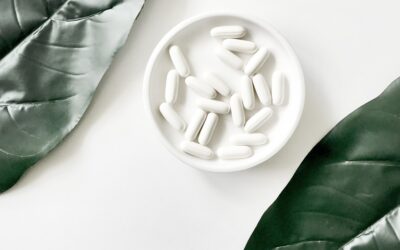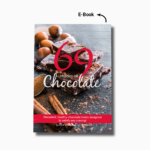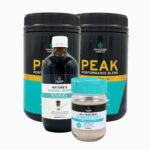Last month I talked about the fish oil industry and created quite an uproar. For me as I was researching the information I was also in an uproar. Something that I thought was a good quality product has been bastardised and made out to be something it was not. Don’t get me wrong fish oil is wonderful but ‘in the fish’ for both health, economic and sustainable reasons.
As a result of looking into the fish industry I decided to also look at the sustainability and fat content and variety of all plant and animal based fats and oils. I made up a table that gave me the percentages, of all fats within the plant or animal fat/oil, I found 19 fats and oils to analyse and was blown away by the variety of all. Not one was the same, each one was unique in its properties and variables and offered different qualities and quantities of an array of fats and oils which all have a benefit for human health. Of course the food they are extracted from also give these benefits but just not in a concentrated form. Oils I looked at included, walnut, avocado, coconut, evening primrose, borage, apricot kernel, almond, flax, sesame, chia, inca inchi, olive, sunflower, butter, lard and a variety of fish oils.
From the time I started university and my nutrition degree I learnt about fats. I knew that there were only two essential fats that we needed to consume for health. Let me explain to you first what an essential fat is before I proceed. The body needs just two types of fats in order to make up all the other fats it needs for health and energy. Those two fats are Alpha Linolenic Acid ALA (omega 3) and Linoleic Acid LA (omega 6). From these two fats our body can make up derivatives such as DHA and EPA also found in other animal and fish oils as well as GLA notably found in evening primrose oil and borage oil. So in other words all you need are two fats in order to make up all the fats you need for health. However there is a slight problem which is why these derivatives of our essential fats have made notoriety and become big sellers in the supplement market.
Our bodies can convert ALA to EPA and, to lesser extent, DHA. This conversion is relatively inefficient, and is dependent on several factors including hormone levels (this is what the scientific literature tells us).
The Linus Pauling Institute reports that for a healthy human, approximately 21% of ALA is converted to EPA and 9% to DHA. Because ALA conversion to DHA is (in sciences opinion) severely limited, foods containing ALA should not be viewed as the only reliable source of DHA. Other sources of DHA are in algae (seaweed) and it is this that the fish eat that in turn makes their oil approximately 10% DHA .
The efficiency of our body to convert ALA to DHA is much the same as a fish. The content of DHA and EPA, is approximately 10% of the fish oil content. The reason why fish oil is such a huge seller is for these two products (EPA and DHA). In other words by my estimates, we are just as efficient at converting the essential fats we consume into these derivatives (EPA and DHA) as are fish. This made me even more opposed to the fish oil industry and more determined to find something else that would give us the essential fats we need rather than just the derivatives.
Let me repeat what I just said. By my estimate humans convert essential fatty acids into EPA and DHA as efficiently as do fish. Therefore all you have to make sure you are doing is eating sufficient essential fats – ALA and LA in your daily diet.
ALA and LA are available in most cold pressed oils, but not all. For instance, macadamia, sesame, chia seed, walnut and sunflower oil are high in LA but low in ALA, flax is high in ALA but smaller amounts of LA.
I decided to make up a mixture of a few oils that would give me what I needed as far as my essential fatty acids. While some plant oils were high in one essential fat, it was not high in the other. I figured if I combined flax, chia, evening primrose and coconut oil I would get a great mix of oils that satisfied all the needs, then by eating fish, grass fed and wild meats as well as consuming grass fed butter with my seaweed salt I would also get the derivates such as EPA, GLA and DHA. Problem solved but why does it have to be so confusing.
Now I have some frustration regarding the whole fat story. Fat is not in isolation, there are thousands of nutrients tied to the fatty acid structure that all help in our nutritional needs and it seems that we have reduced our beautiful oils and fats to omega 3, 6 and 9 as well as saturated vs unsaturated. Look at the big picture of these fats and oils not the micro picture. Vitalism sees the whole – mechanism sees the parts. And while I’m explaining the parts, my belief is that if we trust in what nature does then it will deliver all that we need without really knowing all the bits and pieces. After all we have survived for thousands of years without this knowledge by just eating the foods that nature provided.
Essential fats ALA and LA are necessary to consume for health, the derivates EPA, DHA and GLA are made as the body demands them. Adding extra to the diet in the way of eating whole fish, seaweed (found in the Changing Habits Seaweed Salt) and butter is what humans do naturally in different cultures. Having this knowledge supports what we do naturally.
What was interesting when I was reviewing the fats and oils in my spreadsheet I noticed that one oil from the inca inchi seed was 45% ALA and 39% LA – BINGO. That means that almost 85% of the oil is what the body requires to make all the other fats and oils in the body for health. It also had a quantity of plant based saturated fat which has anti microbial, antibacterial and anti parasitic properties.
Instead of combining oils my answer to the fish oil dilemma was to use Inca Inchi Oil, along with the seaweed salt and weekly doses of beautiful fresh fish. Phew that is so much easier than popping a dozen fish oil capsules.
Inca Inchi Oil is cold pressed from the Inca Inchi seed, it has a beautiful taste and I use it as a food in salad dressings, smoothies, raw food slices and cakes. I like to use a mix of oils in my cooking, baking and food preparation. Coconut oil I heat, while inca inchi oil, walnut oil and other plant based oils I’d rather not heat.
Food should be our medicine. Sustainable, clean, unadulterated food should be the aim of what we seek out in the market place. Inca Inchi Oil has the qualities I was looking for that could give me my stop gap to make sure I was getting my two essential fats that are required for the health of the human body.
As a result of my research we are about to launch Inca Inchi Oil in the very near future. Watch out for its debut into the Changing Habits Food Range, we will be emailing everyone when it is available for purchase.







0 Comments